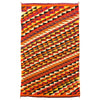Gallery Events And News
- Featured Artists
- Event Calendar
- Artist Biographies
- News & Press
- Educational Videos
- Podcast
- Essential West
- Learn
Learn about the latest Medicine Man Gallery happenings; all about our artist, see our educational videos about native American art and fine art, watch podcasts with your favorite artists and check out art and history-related links we think you'll enjoy.
Essential West Magazine
Exploring Art, Literature, History, Museums, Lifestyle, and Cultures of the West

It amazes me that four letters - W-E-S-T - have the ability to evoke an instantaneous emotional image. Simply the act of reading these four letters has caused you to form a narrative of your west.
Can the West be distilled to its essence - a simple direction or region? I believe not; it is a deeper dive of consciousness. How America sees itself and the world defines us. Diverse cultures, strong individualism, open spaces, and raw natural beauty marinated in a roughshod history have formed this region’s unique milieu.
Our online magazine’s primary focus is to feature relevant topics in art, literature, history, museums, lifestyle, and culture; lofty goals for any publication. No single magazine can be the beckon of all things western; it is a diverse, evolving paradigm that cannot be pigeonholed. As the publisher, I hope to be the buffalo that grazes the wide expanse of western sensibility and relay to you a glimpse of how I perceive our Essential West.
- Mark Sublette
Featured Article

A Visit to the Oklahoma City Museum of Art
I made my first visit to the Oklahoma City Museum of Art in May of 2024. The modestly sized museum has fine holdings of mostly 20th century American art and boasts one of the largest collections of Dale Chihuly glass anywhere in the world. I found myself especially drawn to four Western landscapes. The museum doesn’t specialize in...

Using nature as his guide, Matt Smith has brought the Southwest desert to life in his oil paintings.
By Guest Writer Michael Clawson Matt Smith - Little Valley Canyon | Oil on Linen | 12" x 14" Arizona State University, like many big American universities, has a notoriously nightmarish parking system. It was during that long walk to his car one day just prior to graduation when Matt Smith felt the universe bearing down on him. “It felt like miles to my car,” he recalls. “I just remember thinking, ‘I’ve got nothing. Where do I go? And what do I do?’ It was intense. I didn’t even go to graduation. I had them...

Lunder Research Center now under construction at the Couse-Sharp Historic Site
By Michael Clawson, Guest Writer A rendering of the Lunder Research Center, which is now under construction at the Couse-Sharp Historic Site in Taos, New Mexico. After a low-key and socially distanced groundbreaking on May 18, the Lunder Research Center is now under construction at the Couse-Sharp Historic Site in Taos, New Mexico. The research center, funded by the Couse Foundation, will house archives related to the 12 members of the Taos Society of Artists. The 5,000-square-foot building—which will also include a gallery and exhibition space—will be climate controlled and feature museum-quality storage, and will include materials...

Color Riot! exhibits the evolution of Navajo textiles through exposure to synthetic color dyes from 1860 to the early 1900s
Navajo Transitional Blanket c. 1890s, 113" x 65.5" Wassily Kandinsky is widely recognized as the world’s first abstract painter. The first visual artist to completely break away from representation in his artworks. For that reason, every art history textbook and museum centers him as an indispensable figure of the 20th century. While undoubtedly essential, abstraction didn’t begin with a “big bang” off the easel of Kandinsky. No one person is responsible for abstraction any more than one person being responsible for Impressionism or the Renaissance. Recent scholarship places lesser-known Hilma Af Klint as working abstractly years before Kandinsky....

From the Vault: Identifying authentic Navajo bracelets from 1870-1900
By Michael Clawson, Guest Writer Navajo Ingot Silver Bracelet c. 1900s, Size 5.75 “Ingot, simplicity and wear,” Mark Sublette says in his video about identifying early Navajo bracelets. Those three aspects are what the experts look for when looking at early Navajo jewelry, and they can also help collectors of all stripes as they consider adding to their jewelry collections. Some of the most beautiful Navajo bracelets come out of an important period spanning from 1870 to 1900. It was during this period that Navajo artisans were inspired by the Spanish, but also Native Americans to the...

The art museum of the future has arrived - in Tucson
Tucson Museum of Art Kasser Family wing of Latin American Art Exterior, Photo by Tim Fuller The art museum of the future is already here. You can find it in Tucson, Arizona. Years before the summer of 2020 when it became painfully obvious to museums that they must diversify their collections and programming, discard their century-old obsession with white, male artists and open their spaces for work better suited to reflect their communities, the Tucson Museum of Art was planning for its first expansion since 1975. An expansion that would continue bringing the institution’s Latin American art to the...

Mitch Epstein Shows Faces Of American Resistance At Amon Carter Museum Of American Art
Mitch Epstein (b. 1952), 'Joshua Flyinghorse and William Nelson Williams III 'Nine Tails,' Rosebud Camp, Standing Rock Sioux Reservation, North Dakota 2017.'(C) BLACK RIVER PRODUCTIONS, LTD. / MITCH EPSTEIN. COURTESY OF SIKKEMA JENKINS & CO. NEW YORK Being there makes all the difference. Not only being there, going back. Spending enough time in a place to understand it. Understand its people. Talking to them–yes–but more importantly, listening. Mitch Epstein has crisscrossed the country from his home in New York City, placing himself in resistance movements well- and little-known from Standing Rock, North Dakota to Huntingdon County, Pennsylvania and...

"The Spirit Who Walks Among His People"
Trailer for Lisa Gerstner's new documentary on the life of Earl Biss Lisa Gerstner gave that subtitle to both her Earl Biss biography, published in 2018, and her nearly completed, feature-length documentary of the Crow (Apsáalooke) painter. Gerstner first met Biss at a party in Aspen, Colorado in 1994 through a mutual friend. The friend thought Gerstner should write Biss’ biography. Gerstner was not a professional writer and with only a few published articles under her belt, had never attempted a project so ambitious. She recalls in the book, “Experiences with Earl Biss,” the artist sizing her up...

K Art Gallery Brings Contemporary Native American Art From Across The Country To Buffalo, New York
Luzene Hill, 'Retracing the Tract,' 2015. Installation Who thinks 2020, amid the COVID-19 pandemic which has devastated the cultural sector, would be a good time to open a new art gallery? Who thinks focusing the efforts of that gallery solely on one of the most marginalized communities in American society and the art marketplace, contemporary Native American, would be a good idea? Who thinks doing all of this in Buffalo, New York makes sense? Dave Kimelberg does. Kimelberg, a Seneca Nation of Indians (Bear Clan) member, is the owner and founder of K Art, one of the only...

Protecting an Icon of the West, the Majestic Sage Grouse
Noppadol Paothong (American, born Thailand, 1973), Monarch of Sky and Land, n.d., Photo on canvas. 30 x 40 x 1 ½ inches. © Noppadol Paothong. Grizzly bears. Wolves. Bison. For well over a century, Americans have fought–in the wilderness, in legislatures and in courtrooms–over the role these iconic animals should play in the contemporary West, whether that contemporary West be 1880, 1980 or today. On one side are the people seeking to extract their personal fortunes from the land, those who want the wild animals pushed out. On the other side, the people who believe the animals have...

Kenneth Begay's unique perspective, sleek designs, and skill set place him as one of the most important silversmiths during the 1950-70s.
By Mark Sublette View Available Kenneth Begay Pieces Here Arizona's fledgling statehood was barely a year old, and Native Americans wouldn't have the right to vote for another eleven years when Kenneth Begay was born in a hogan in rural Steamboat Canyon in Eastern Arizona. The wide-vista Colorado Plateau lined with rows of red- yellow sandstone buttes was where the fledging silversmith learned his craft at the Fort Wingate Indian School. His mentor was the famous silversmith Fred Peshlakai who had begun teaching at the school in 1931. Fred and his younger brother Frank were the sons of...